Ronald Tetzlaff
Block Induced Signature Generative Adversarial Network (BISGAN): Signature Spoofing Using GANs and Their Evaluation
Oct 08, 2024



Abstract:Deep learning is actively being used in biometrics to develop efficient identification and verification systems. Handwritten signatures are a common subset of biometric data for authentication purposes. Generative adversarial networks (GANs) learn from original and forged signatures to generate forged signatures. While most GAN techniques create a strong signature verifier, which is the discriminator, there is a need to focus more on the quality of forgeries generated by the generator model. This work focuses on creating a generator that produces forged samples that achieve a benchmark in spoofing signature verification systems. We use CycleGANs infused with Inception model-like blocks with attention heads as the generator and a variation of the SigCNN model as the base Discriminator. We train our model with a new technique that results in 80% to 100% success in signature spoofing. Additionally, we create a custom evaluation technique to act as a goodness measure of the generated forgeries. Our work advocates generator-focused GAN architectures for spoofing data quality that aid in a better understanding of biometric data generation and evaluation.
A Compact Model of Threshold Switching Devices for Efficient Circuit Simulations
Aug 03, 2023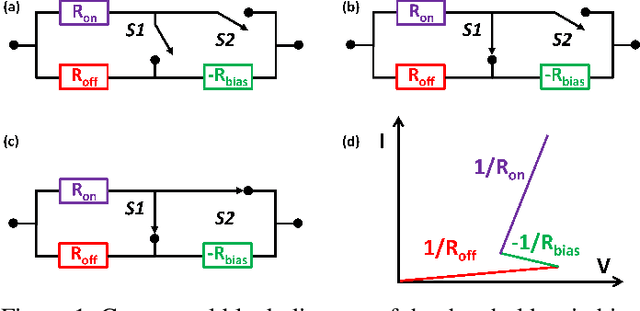
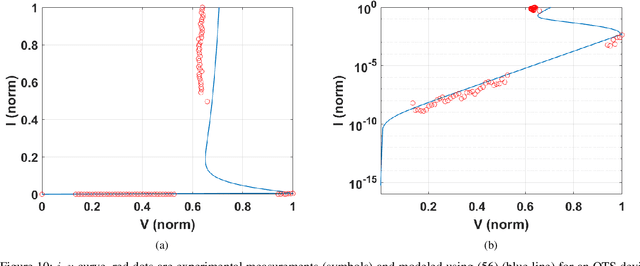
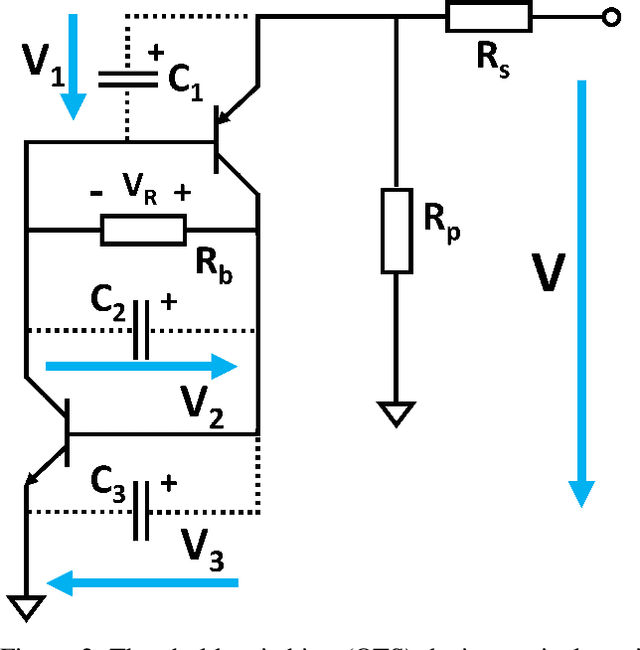
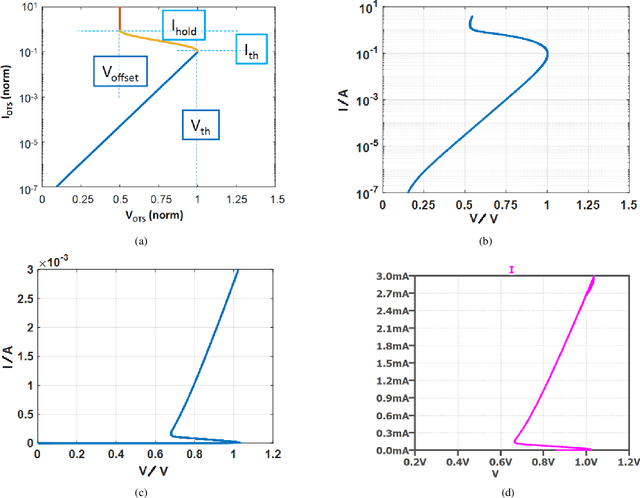
Abstract:In this paper, we present a new compact model of threshold switching devices which is suitable for efficient circuit-level simulations. First, a macro model, based on a compact transistor based circuit, was implemented in LTSPICE. Then, a descriptive model was extracted and implemented in MATLAB, which is based on the macro model. This macro model was extended to develop a physical model that describes the processes that occur during the threshold switching. The physical model derived comprises a delay structure with few electrical components adjacent to the second junction. The delay model incorporates an internal state variable, which is crucial to transform the descriptive model into a compact model and to parameterize it in terms of electrical parameters that represent the component's behavior. Finally, we applied our model by fitting measured i-v data of an OTS device manufactured by Western Digital Research.
Generalizable Classification of UHF Partial Discharge Signals in Gas-Insulated HVDC Systems Using Neural Networks
Jul 18, 2023



Abstract:Undetected partial discharges (PDs) are a safety critical issue in high voltage (HV) gas insulated systems (GIS). While the diagnosis of PDs under AC voltage is well-established, the analysis of PDs under DC voltage remains an active research field. A key focus of these investigations is the classification of different PD sources to enable subsequent sophisticated analysis. In this paper, we propose and analyze a neural network-based approach for classifying PD signals caused by metallic protrusions and conductive particles on the insulator of HVDC GIS, without relying on pulse sequence analysis features. In contrast to previous approaches, our proposed model can discriminate the studied PD signals obtained at negative and positive potentials, while also generalizing to unseen operating voltage multiples. Additionally, we compare the performance of time- and frequency-domain input signals and explore the impact of different normalization schemes to mitigate the influence of free-space path loss between the sensor and defect location.
Coherent False Seizure Prediction in Epilepsy, Coincidence or Providence?
Oct 26, 2021

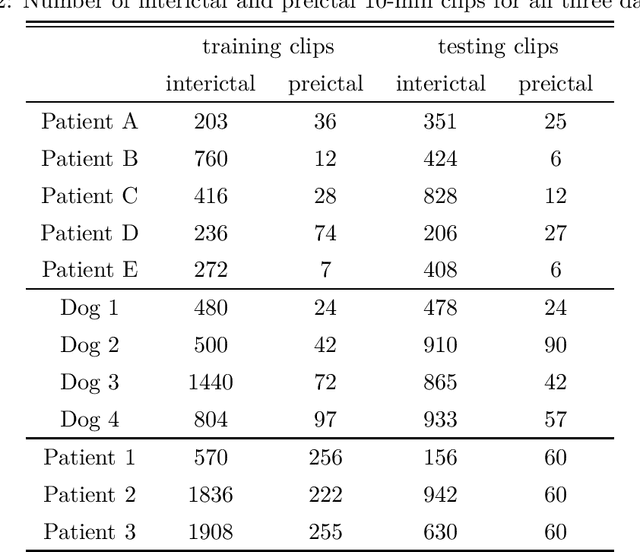

Abstract:Seizure forecasting using machine learning is possible, but the performance is far from ideal, as indicated by many false predictions and low specificity. Here, we examine false and missing alarms of two algorithms on long-term datasets to show that the limitations are less related to classifiers or features, but rather to intrinsic changes in the data. We evaluated two algorithms on three datasets by computing the correlation of false predictions and estimating the information transfer between both classification methods. For 9 out of 12 individuals both methods showed a performance better than chance. For all individuals we observed a positive correlation in predictions. For individuals with strong correlation in false predictions we were able to boost the performance of one method by excluding test samples based on the results of the second method. Substantially different algorithms exhibit a highly consistent performance and a strong coherency in false and missing alarms. Hence, changing the underlying hypothesis of a preictal state of fixed time length prior to each seizure to a proictal state is more helpful than further optimizing classifiers. The outcome is significant for the evaluation of seizure prediction algorithms on continuous data.
Convolutional Neural Networks for Epileptic Seizure Prediction
Nov 05, 2018
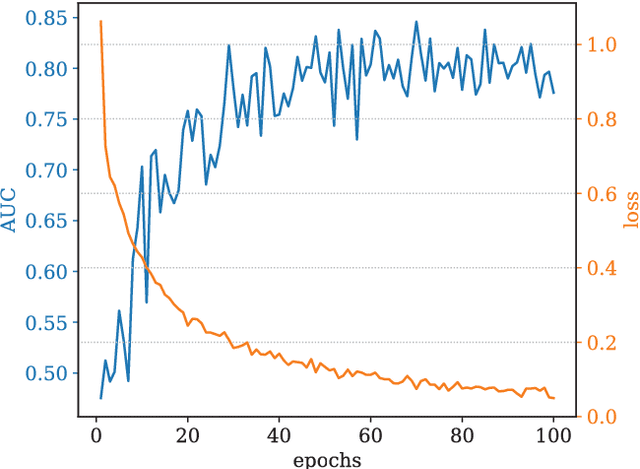
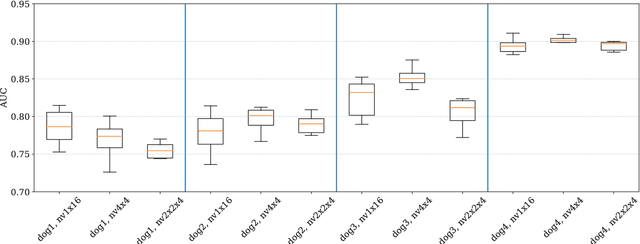
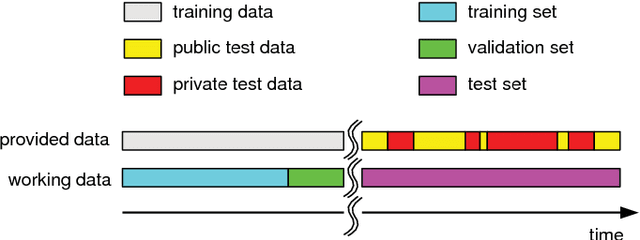
Abstract:Epilepsy is the most common neurological disorder and an accurate forecast of seizures would help to overcome the patient's uncertainty and helplessness. In this contribution, we present and discuss a novel methodology for the classification of intracranial electroencephalography (iEEG) for seizure prediction. Contrary to previous approaches, we categorically refrain from an extraction of hand-crafted features and use a convolutional neural network (CNN) topology instead for both the determination of suitable signal characteristics and the binary classification of preictal and interictal segments. Three different models have been evaluated on public datasets with long-term recordings from four dogs and three patients. Overall, our findings demonstrate the general applicability. In this work we discuss the strengths and limitations of our methodology.
 Add to Chrome
Add to Chrome Add to Firefox
Add to Firefox Add to Edge
Add to Edge